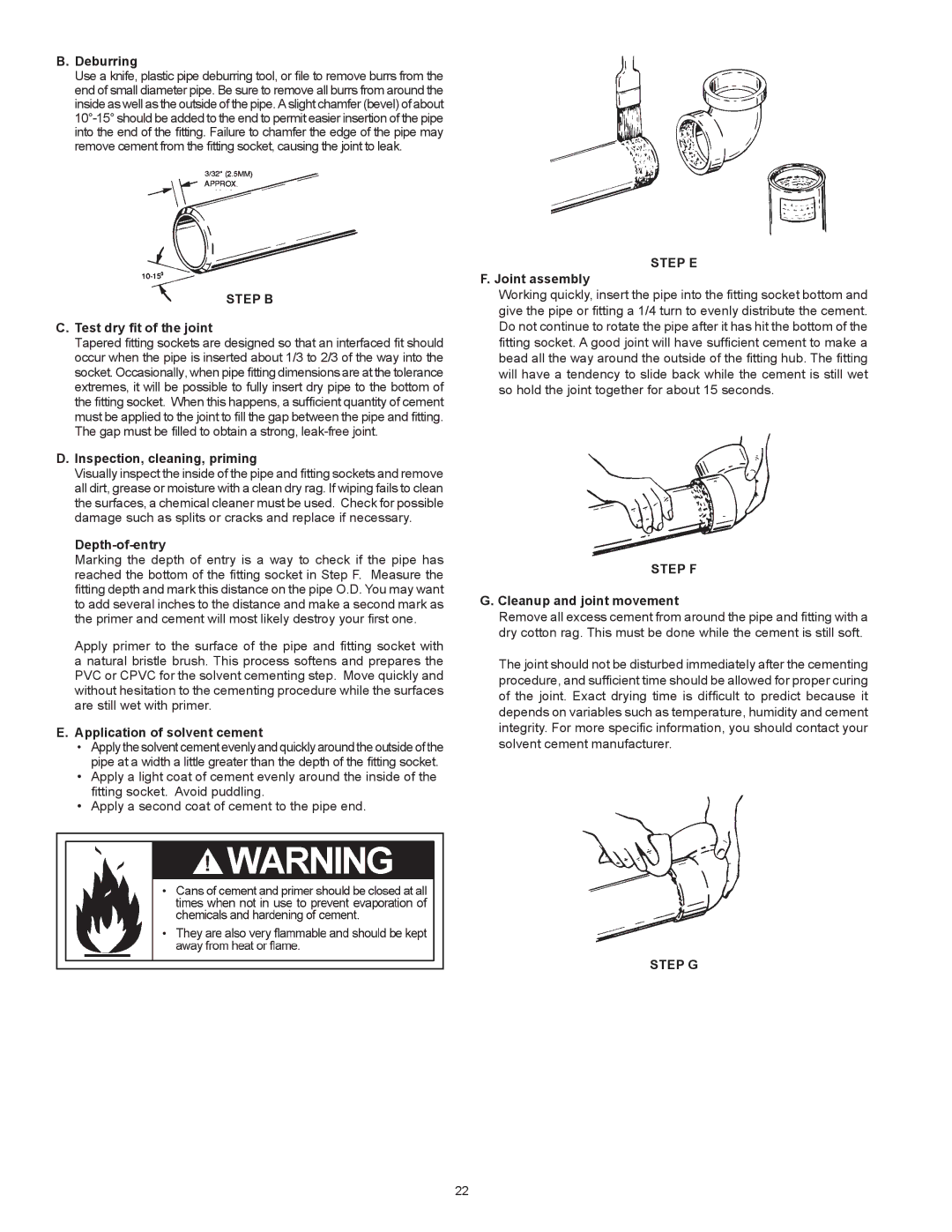GS675HRVIT, GS675YRVIT specifications
The State Industries GS675HRVIT and GS675YRVIT are high-efficiency water heaters designed to meet the growing demand for reliable and energy-efficient hot water solutions. These models are ideal for both residential and light commercial applications, offering a blend of advanced technology, durable construction, and user-friendly features.One of the standout characteristics of the GS675HRVIT and GS675YRVIT is their compact design, which makes them easy to install in various spaces without compromising performance. Both units are equipped with a high-efficiency gas burner that provides rapid water heating capabilities. Their power input allows for quick recovery rates, ensuring a steady supply of hot water when needed.
Energy efficiency is a key feature of these models. They utilize advanced insulation materials and designs that minimize heat loss, thus significantly reducing energy consumption. This not only contributes to lower utility bills but also supports environmental sustainability efforts by lowering carbon footprints. Both models are designed to meet or exceed Energy Star certification standards, highlighting their commitment to energy conservation.
In terms of technology, the GS675HRVIT and GS675YRVIT incorporate robust safety features, including a temperature and pressure relief valve that prevents dangerous pressure build-up, as well as an electronic ignition system that improves reliability by eliminating the need for a standing pilot light. Additionally, the gas control valve ensures precise regulation of the water temperature, enhancing safety and comfort for users.
Durability is another hallmark of these water heaters. Constructed with high-quality materials, the units feature a glass-lined tank that resists corrosion, extending the lifecycle of the product. They also come with a comprehensive warranty, providing peace of mind for consumers regarding their investment.
Users will appreciate the convenience that the GS675HRVIT and GS675YRVIT models offer, including easy-to-use controls and clear indicators for operational status. Installation and maintenance are simplified, making it straightforward for both homeowners and professionals to manage the unit over time.
Overall, State Industries GS675HRVIT and GS675YRVIT are excellent choices for anyone looking for efficient, reliable, and durable water heating solutions. With their innovative technology, energy-saving features, and user-friendly design, these models stand out in the competitive market of hot water heaters.

